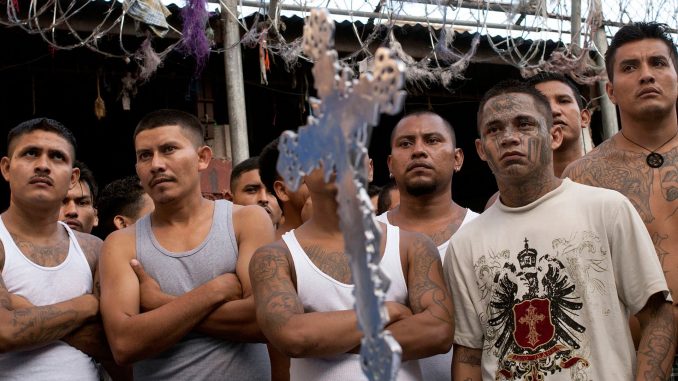
Immigration policy isn’t rocket science. It’s far more complex.
Rocket science, after all, is about precision in the application of mathematic and scientific principles. Immigration policy is about the behavior of millions of human beings and the politics of entire nations. It is shaped by considerations of politics, economics, culture, history, and ethics.
Consider, for example, the relationship between immigration and Central American gangs.
We’ve been hearing a lot about the connection lately, especially from advocates like Sonia Nazario, the Pulitzer Prize-winning author of “Enrique’s Journey”. It is an excellent story, bravely reported and powerfully written. It is the story of a Honduran boy searching for his mother. She had left him with relatives years earlier as she set off to work illegally in the United States.
Nazario writes on her website that: “gangs, long present in parts of Central America, have grown and increasingly allied themselves with Mexico’s brutal Zetas narco-trafficking cartel. Both the gangs and the cartel forcibly recruit children. They accost nine-year-old boys leaving school and tell them: ‘Join us, or we will rape your sister, kill your parents.’ Many children are fleeing gang recruitment in places like Honduras and El Salvador that now have the highest homicide rates in the world.”
Thirty years ago, there was a mass exodus from civil war and poverty in Central America. Some who came to the United States became involved in street gangs that engaged in drug trafficking and violent crime. As a result, according to a Washington Post story last week, “Honduras, Guatemala, and El Salvador received tens of thousands of jobless, alienated young men who brought new sophistication and brutality to local gangs.”
It was a remarkable sequence of geopolitical and geocultural events. Many of those who fled trauma in El Salvador caused trauma in the land where they had sought refuge. The United States, seeking to protect its citizens, carried out mass deportations. Those who were sent home carried the gang infection with them. Vicious gangs like Mara Salvatrucha (MS-13) and 18th Street proliferated, in part because drug traffickers used Central America to stage shipments to the insatiable U.S. drug market that is often served at the retail level by gangs.
Now Central American gangs are part of the reason for a new exodus, and the United States is being called upon to provide refuge once again.
Many of the young people streaming across the Texas border are hoping to join parents who are in the United States, often illegally. These parents, often single mothers, left their children behind and made the clandestine journey in order to work and send money home to support the children.
But the separation took an emotional toll and imposed severe social costs, including the proliferation of gangs.
Here’s a perspective provided by a young Salvadoran gang member in an interview with Univision anchor Maria Elena Salinas. Articulate, intense, driven by a smoldering anger at what he sees as the failure and cynicism of the government, he said:
This government, the state itself, caused the disintegration of the family. … They have grown accustomed to the fact that this country survives on the remittances. So what does that mean? Parents abandon their children. They go to the United States. They leave them with the grandmother.
A book-length study of Honduran gangs titled Maras y Pandillas en Honduras cites a connection between this migratory pattern and the gangs, which are often called “maras”. It said parents who leave their children behind are often responsible for “the total abandonment of their children; the absence of concern, attention, and affection and their incorporation into the maras.”
The study included parental absence in a long list of causes for the growth of gangs. Other causes were “the bad living conditions of the families, the lack of employment, low income, lack of public services, and low educational levels.” And this: “the absence of government policies to reduce poverty, combat corruption, improve public safety, and be inclusive toward youth.”
As Maria Elena Salinas noted in a commentary about the Central American countries: “Unfortunately, although the governments say they are implementing programs to help the poor, you don’t see them.”
Now the United States must decide what it will do. If rocket science were this complex, the man in the moon would never have met Neil Armstrong in the summer of 1969.
Click HERE to read more

Be the first to comment